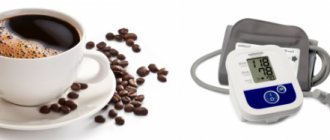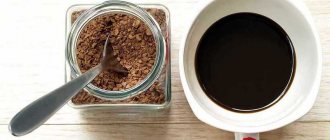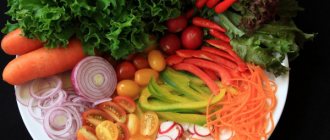Autumn everyday life has begun. And few people imagine their working life without a cup of aromatic strong coffee. It can not only give wings and good mood, but also protect against cancer. But under one important condition - if you drink it correctly. Otherwise, with the help of espresso or Americano we can significantly shorten our life. So, how to drink coffee beneficially and without health risks? Boris Skachko, a nutritionist, herbalist, medical blogger, coffee lover with 40 years of experience and author of the book “Almost Everything about Coffee,” told Vesti about this.
WHO NEEDS TO BE CAREFUL WITH THIS DRINK?
A simple test will give you the answer to this question. When you wake up, look at yourself in the mirror. If you see dark circles under your eyes, this indicates that your liver is not working well. This means that our filtration “factory” did not restore the blood until the morning, and it is thicker. If a person in this state drinks coffee, he will force his heart to work more intensely. With viscous blood, this is a way to develop heart failure. This is if there is little coffee. If you pour yourself a heavy dose of caffeine, your heart may not be able to stand it at all: acute heart failure will occur.
The second test is to touch your hands and feet. If they are cold, then the person not only has increased blood viscosity, but already has weakness of the heart muscle. The heart cannot provide blood supply: the blood moves along the forearm, reaches the hands and goes no further. That's why they are cold. If in such a state a person drinks a lot of coffee, he will wear out his already weak heart. After a cup of coffee, your hands will, of course, become warm, but at the cost of the fact that our “engine” will work in overload mode.
The third test is to see if there is swelling. If your face swells, bags appear under your eyes, this indicates that your kidneys are acting up. This is where coffee can help, as it removes excess water from the body. But if your fingers and legs swell, if marks from the bed remain on your body, this means that the liver has not coped with the purification of the blood. In this case, coffee will disrupt the liver. The fact is that caffeine is a fairly harsh alkaloid, which is aimed at reducing the vital activity of the enemy who eats coffee. And the liver is a life-support organ, so if it has problems, coffee will only make them worse.
What to do in these cases? Go to the doctor, have your liver and heart examined. You may have to either give up coffee altogether, or combine it with medicinal plants. Which ones? Depends on each specific problem.
Coffee nuances
*Strong black coffee is poured into small, fine porcelain cups. Coffee with milk can be poured into tea cups. Cappuccino is drunk from thick earthenware cups with a volume of 150 milliliters.
* Oriental coffee is not stirred, otherwise sediment will rise from the bottom. Therefore, Turkish coffee is generally served without a spoon. Sugar is either added to it in advance or not added at all. Just a little salt.
* It is not recommended to drink coffee on an empty stomach, as this can cause heartburn and subsequently a stomach ulcer.
* Many people like to drink coffee with cold water. Water enhances the taste and aroma of coffee, and the tonic effect of coffee is more pronounced. But experienced coffee lovers recommend first drinking a sip of water and then drinking coffee, so its taste is felt more fully and the aftertaste lasts for a long time.
Some people even recommend drinking a full glass of water before drinking coffee to rinse your tongue's taste buds and help you properly perceive the taste of coffee, but I take this recommendation with a grain of salt. It is also recommended to end the coffee ceremony with a sip of espresso .
* To improve the properties, aroma and taste of coffee, various spices and herbs are often added to it. The main ones, which go well with coffee beans and give the drink a very interesting and unique taste, are cinnamon, ginger, cloves and cardamom. They can be used either individually or in combination with each other.
* Although lemon is considered a more traditional addition to tea, it can be used as a flavor enhancer when serving coffee. In combination with lemon, coffee becomes more invigorating and takes on new flavors that were previously unknown.
* Coffee goes well with cognac, liqueur and many other strong alcoholic drinks, the main thing is that they are also of high quality. They can be added to coffee or drunk separately.
* Don’t forget about such a common drink today as coffee with milk, which is often replaced with cream or vanilla ice cream. Recently, a large number of different varieties of coffee drinks have appeared, which are mixed with caramel, chocolate and other sweets.
* Cakes, muffins and biscuits are served with coffee.
* Drink hot coffee in small sips. You should drink it slowly, allow yourself to fully enjoy its aroma and taste, savoring every sip, but not forgetting that it can cool down. If the coffee has cooled down, it is not recommended to reheat or dilute it with hot water. It's better to drink coffee chilled in the refrigerator.
* It is not recommended to drink coffee before bed, as it can cause insomnia and poor health in the morning as a result of lack of sleep. Caffeine will speed up your heart rate, eliminate the feeling of drowsiness and increase the body's arousal. You should also not drink coffee on an empty stomach.
* To prevent the formation of heartburn, and subsequently a possible stomach ulcer, it is recommended to eat or at least have a snack before drinking coffee. That’s why you shouldn’t limit yourself to just coffee for breakfast.
HOW MUCH COFFEE CAN A HEALTHY PERSON DRINK?
Caffeine lasts for two to five hours. This is the interval you should drink coffee at. As for the dosage, you should pay attention to your behavior after coffee. If, after drinking a cup, your performance has increased, your mood has improved, it means that the hypothalamus has coped with this stimulus, and you have obtained the desired result without consequences for the body. If the coffee dose turns out to be more than you need, then the level of magnesium in the blood decreases, which is responsible for our calmness. And then, for example, a calm woman can turn into a vixen. She hasn't become bad - she just doesn't know how to make coffee properly.
How to drink for weight loss
To lose weight, people most often drink green coffee. It is believed that its use gives good results, but in practice, such methods often negatively affect the digestive, nervous, and excretory systems.
In order to lose excess weight, it is recommended to drink green coffee 20-30 minutes before meals. It contains a large amount of chlorogenic acid, which activates the process of food digestion, and therefore suppresses the feeling of hunger. This effect leads to the fact that a person consumes less food, while it is digested more actively.
This method of losing weight is acceptable during the day, but not in the morning, since drinking coffee on an empty stomach risks the formation of ulcers. The recommended dosage of the drink should be reduced. Instead of 5-6 cups, you are allowed to drink only 2-3 servings per day.
How to make the healthiest drink possible
It is ideal to brew coffee in a Turk. With this method of preparation, beneficial substances are extracted from coffee beans, and there are more than 300 of them. There are several life hacks that help you get the maximum benefit from coffee.
- Before pouring water, the coffee beans need to be heated in a Turk for 15–20 seconds.
- First pour half the volume of water, then add the rest.
- Fill with water and add a pinch of sugar. It ensures the solubility of the beneficial substances contained in coffee. If this is not done, some of them will simply go to waste. But you can’t add honey. When heated, it releases a carcinogen. An alternative to sugar is salt. Through osmosis, it helps draw out some of the nutrients from the coffee beans. But for hypertensive patients it is better to refuse it. You can soften the effect of caffeine on the heart muscle with cardamom.
Subscribe to the daily email newsletter from the creators of the number 1 newspaper in Ukraine. Every evening in your inbox the most important, exclusive and useful. Subscribe .
How many cups can you drink per day
You cannot drink coffee in unlimited quantities. Such uncontrolled consumption negatively affects the health of the nervous system, gastrointestinal tract, and heart. To make drinking the drink not only enjoyable, but also healthy, you should not drink more than 2–3 cups of coffee during the day, that is, 300–400 ml at medium strength.
When calculating the optimal number of servings, the type of drink must also be taken into account.
- If a person brews espresso from natural ground coffee beans, a safe daily dose for him will be 6-8 cups of the finished product. In this case, you can drink a new portion again after 3 hours.
- The norm for using a soluble product is 2–3 servings, prepared from 2 teaspoons of powder and any amount of water.
- The caffeine-free product can be drunk in a volume of 800 ml per day. But you can’t get carried away with such a drink. Although it does not contain much caffeine, it can have negative effects on the body due to the natural acids, fats and sugars it contains.
Many people consume coffee on a limited basis. In this case, the optimal volume of the drink must be determined taking into account the recommendations of doctors, one’s own state of health and well-being.
Effect of caffeine on the body
It has long been known that caffeine invigorates. But the compound also promotes the production of adrenaline, which breaks down fatty acids. Caffeine also stimulates the secretion of gastric juice (which improves digestion), and due to its diuretic properties it reduces swelling.
However, there is also the other side of the coin:
- with gastritis, stomach ulcers and other gastrointestinal diseases, increased secretion of gastric juice worsens health and causes stomach pain;
- caffeine speeds up your heart rate;
- with frequent urination, the body becomes dehydrated and potassium is washed out of it;
- the substance causes insomnia.
Over time, the body adapts to constant doses of caffeine, which excite the nervous system. An effect of inhibition occurs, which can only be relieved by the next dose of the substance. As a result, avid coffee drinkers generally cannot wake up properly in the morning without a cup of their favorite drink. Therefore, it is important to know how much coffee to drink so as not to exceed the dose of caffeine and not cause unwanted consequences.
But calculating the caffeine content in finished coffee (and the strength of the drink is determined by this indicator) is not so easy. Arabica beans contain approximately 1–1.5% caffeine (there is a variety with 0.2% content), Robusta beans contain up to 3%. It is difficult to determine exactly how much caffeine is in a particular mixture if you don’t have packaging at hand.
However, it is even more difficult to predict how much caffeine will be in the drink. This depends on the amount of ground coffee, the duration and intensity of its heating. Thus, 100 ml of espresso, which is prepared according to the classic recipe (25–30 seconds in a coffee machine or carob coffee maker), contains on average 170–225 (on average 212) mg of caffeine. In one serving of the drink (25–30 ml) – 50–68 mg.
But not all caffeine from the beans passes into the liquid. If you increase the brewing time of espresso by 5 seconds, the caffeine content in the drink will increase by 10–20%.
Caffeine will not disappear anywhere if you prepare another drink based on espresso: Americano, cappuccino, latte. In diluted espresso, the concentration of the substance decreases, water and milk slow down its absorption, but by and large, the same 50–68 mg of caffeine enters the body. Therefore, giving a child a large latte is the same as giving him two strong espresso shots.
The maximum permissible dose of caffeine is 500 mg per day. In terms of espresso – 7 cups, but no more than 3 at a time. However, this norm is true only for absolutely healthy people leading an active lifestyle, under the age of 35.
If a person plays sports, then on the day of training he can really drink 5-7 servings of espresso. But for those who return to the office after lunch and sit for hours at the computer or TV in the evening, 1 serving in the morning and 1 at lunch are enough (3 servings per day is the limit).
Coffee brewed in Turkish or French press contains 2–3 times less caffeine than espresso (38–65 mg per 100 ml). For a sedentary lifestyle, minor gastrointestinal or cardiovascular disorders, this coffee is preferable.
Coffee while breastfeeding
Is it possible for nursing mothers to drink coffee?
The birth of a child is not a reason to relax, since a woman has a long period of breastfeeding
. And if previously caffeine entered the baby’s body through the placenta, now it will enter the baby’s breast milk.
What do authoritative sources say about the dangers of drinking coffee during lactation?
not enough research has been conducted worldwide
on this issue. Therefore, the dangers of coffee during lactation are judged on isolated cases.
According to the results of one of the few studies conducted by Polish experts, the average level of caffeine consumption
for women during breastfeeding is 125-165 milligrams per day.
Geyser coffee maker
If in a drip coffee maker water is simply poured through a filter with grains, and then drips into a cup or a special reservoir, then in a geyser coffee maker everything happens the other way around. You place it on the stove and the water rises, creating pressure and steam for the filter at the top. On average, such a device costs more than its drip counterpart, which, in my opinion, is not very justified.
Firstly, the geyser requires strict adherence to the instructions. Secondly, it lacks the advantages that drip has. There you turned it on and went about your business, but right there you need to keep an eye on it almost in the same way as a Turk. As soon as the water boils and rises, it is recommended to remove the device from the heat.
But if you do everything correctly, the kofas turn out to be very tasty. The tablet placed in the filter resembles a similar thing in a professional coffee machine. If you really want to, you can achieve the same quality. But the geyser requires too much effort from you. It needs to be washed after each use - without chemicals and after waiting until it cools down. This means that it will not be possible to cook several portions in a row.
How to grind? The same as for drip.
Pros : Taste. The rigor of the preparation - you don't have many options, so the process will become automatic at a certain point.
Cons : You need to monitor both the process itself and the cleanliness of the device. And this takes too much time and attention.
Coffee consumption standards
Coffee standards cannot be calculated by mechanically dividing the maximum permissible daily dose of caffeine by the approximate content of this substance in a serving of the drink. The individual characteristics of the body and lifestyle should be taken into account.
For example, many people like to drink black coffee on an empty stomach. But such a habit can lead to stomach ulcers. To soften the effect of acids on the mucous membrane, it is recommended to add sugar to the drink. However, 5 g of sugar (contents of 1 sticker) contains 19.35 kcal. Adding 100 ml of milk, which slows down the absorption of caffeine, increases the calorie content of the drink by 49–59 kcal (depending on the fat content). Hence the conclusion: people who are prone to obesity should not drink a lot of coffee with sugar or milk.
Table 1. Daily norms for coffee consumption
| Type of coffee | Caffeine content | Safe daily intake for a healthy person | Maximum permissible dose for a healthy person |
| Espresso | 170–225 mg per 100 ml, 50–68 mg per serving | 1–3 servings | 5–7 servings |
| Black coffee brewed in a Turk or French press | 38–65 mg per 100 ml | 100–300 ml | 500–600 ml |
| Americano based on 1 shot of espresso | 170–225 mg per 100 ml, 50–68 mg per serving | 1–3 servings | 5–7 servings |
| Latte, cappuccino or macchiato based on 2 espresso shots | 100–116 mg per serving | 1–2 servings | up to 3 servings (drinks are very high in calories) |
| Instant coffee drink | 31–48 mg per 100 ml | 100–300 ml | 400–600 ml |
When determining a safe dose of coffee, consider the caffeine contained in other drinks
Turk
The fashion for brewing in Turk came to us from the USSR. The Eastern method became popular there for two reasons. First, the Soviets strongly supported the mixing of cultures. Secondly, brewing in a Turk requires minimal costs. Even now this simple device can be bought for three hundred rubles.
It is important to understand that the taste of the same bean in a Turk and in a coffee machine can be very different. And for this it is not even necessary to depart from the classics in favor of the Turkish version of coffee with spices. You need to grind the grain as finely as possible, otherwise the drink will turn out very watery and tasteless. With proper grinding, Turkish coffee will always be strong and overextracted compared to other recipes.
Another trick you need to know is to use cold water and low heat. This is the only way the drink will have time to brew properly. And the owner of a Turk should get a small strainer to strain the grounds. Some will say that this is the whole point, but personally I don’t like leaving mountains of coffee sand in my cup that I can’t finish.
How to grind? Into the dust.
Pros : Convenience. Mobility. Ease of use.
Cons : The need to monitor the coffee while brewing, over-extraction and the fact that the grounds always end up in the cup.











